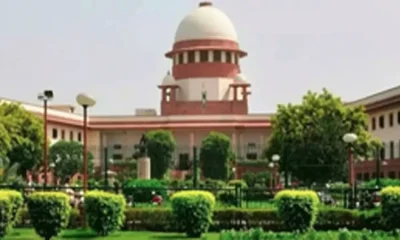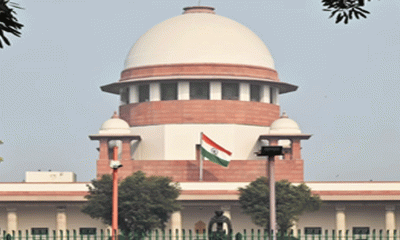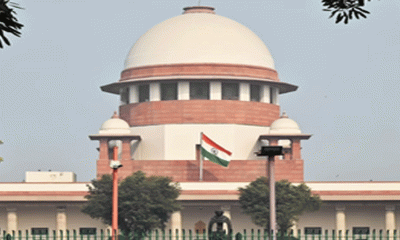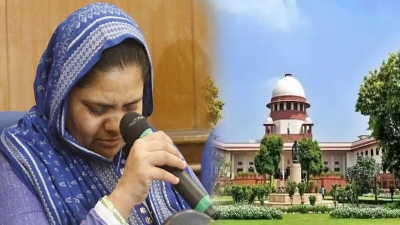National News
‘Will constitute a bench’: SC on petitions against Karnataka HC verdict on hijab
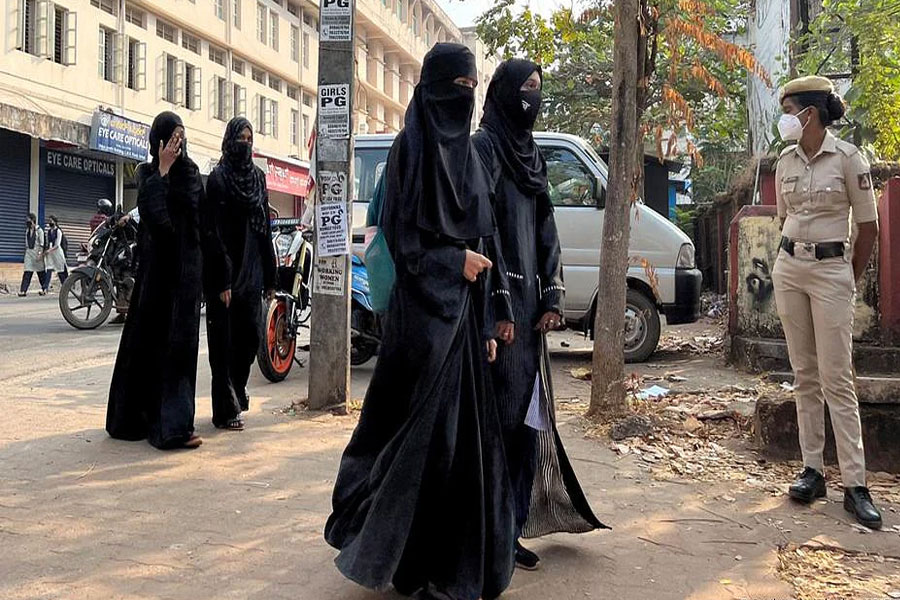
The Supreme Court on Tuesday agreed to set up a bench to consider a clutch of pleas against the Karnataka High Court judgment, which upheld the right of educational institutions to ban wearing of hijab in pre-university colleges in the state.
As counsel mentioned the matter before a bench headed by Chief Justice N.V. Ramana, he said: “I will constitute a bench. One of the judges is not well.” Counsel urged the top court to fix a date in the matter, as petitions against the high court judgment were filed in March.
On July 13, advocate Prashant Bhushan mentioned the matter before a bench headed by Chief Justice Ramana, saying the petitions have not been listed for a long time. “The girls are losing out on their studies. This matter was filed long back,” he said. The Chief Justice replied that it will be listed sometime next week. Bhushan mentioned the matter on behalf of the appellants who have challenged the high court verdict in the top court.
On March 24, the Supreme Court declined to give any specific date to hear a plea challenging the Karnataka High Court order, which dismissed all petitions seeking direction for permission to wear hijab in classrooms.
Senior advocate Devadutt Kamat mentioned one of the cases on behalf of a petitioner, a Muslim girl student, and sought urgent listing of the matter. He insisted that exams are approaching and urged the court to hold an urgent hearing on the matter.
A bench headed by Chief Justice Ramana, however, said this has nothing to do with exams, and told Kamat not to sensationalise the matter. Kamat contended that the girl students are not being allowed to enter the schools, and they will lose one year. However, the bench moved on to the next item.
On March 16, the Supreme Court had declined to grant an urgent hearing on a plea challenging the high court order, which held that wearing of hijab by Muslim women does not form a part of essential religious practice in Islamic faith.
Crime
Fake ‘acid attack’: Delhi Police gives clean chit to 3 ‘accused’; woman, kin under scanner for staging incident

New Delhi, Oct 28: Delhi Police has given a virtual clean chit to a painter and two others accused by a woman of throwing acid on her in North Delhi’s Ashok Vihar last week, Special Commissioner of Police Ravindra Singh Yadav said on Tuesday.
Yadav expressed satisfaction over preventing injustice being meted out to the three “innocents” as the alleged attack has turned out to be an incident staged by the complainant woman and her family to settle scores with the “suspects”.
Yadav told IANS that technical analysis, CCTV footage and physical evidence proved that the three accused were not at the spot where the alleged “acid attack” took place on October 26 near Laxmi Bai College.
“It has turned out to be a case of old enmity related to a plot owned by the father of the woman who levelled false allegations of ‘acid attack’ on the accused,” he said.
The Special Commissioner of Police said the investigation is still underway but prima facie the conspiracy was hatched by the 20-year-old woman, her father, brother and uncle to try and implicate the three men in a false case of “acid attack”.
The two families have a history of litigation and criminal complaints against each other.
Investigators also revealed that the “acid attack” victim’s father Akil Khan, 45, now under custody, was accused of sexual harassment by the painter Jitender’s wife a few days before the October 26 staged episode of ‘acid attack’.
Yadav said the police are seeking legal opinion on the next step as the matter involves two separate issues.
“One, is the ‘acid attack’ and, the other, is the allegation of rape against the father of the ‘acid attack’ victim,” he said.
Yadav said, “For the time being, it is a matter of satisfaction for the police to have foiled the conspiracy by the woman’s family to implicate three innocent people.”
He said the police will now consider acting against the woman’s family for filing a false case.
Yadav said an investigation is still on to verify the woman’s statement that she and her family members had carried toilet cleaner from home to stage the ‘acid attack’ and subsequently report at a hospital with ‘acid attack burns’ on her hands.
The Special Commissioner of Police said they will soon share details of the alleged roles played by the family members of the woman in staging the ‘acid attack’ and attempting to implicate painter Jitender and his two aides, Ishan and Arman.
Yadav said in matters related to crimes against women the police promptly register a case on receiving a complaint and this is what happened in this matter. A case under Sections 124(1) and 3(5) of the Bharatiya Nyaya Sanhita was registered as FIR No. 605/2025 on the woman’s complaint which named the three ‘suspects’.
However, investigations revealed that the allegation against the three “acid attackers” were false and they were physically not present on the spot where the incident was staged, the police said.
Business
India’s services-led growth becoming more balanced, inclusive: NITI Aayog report
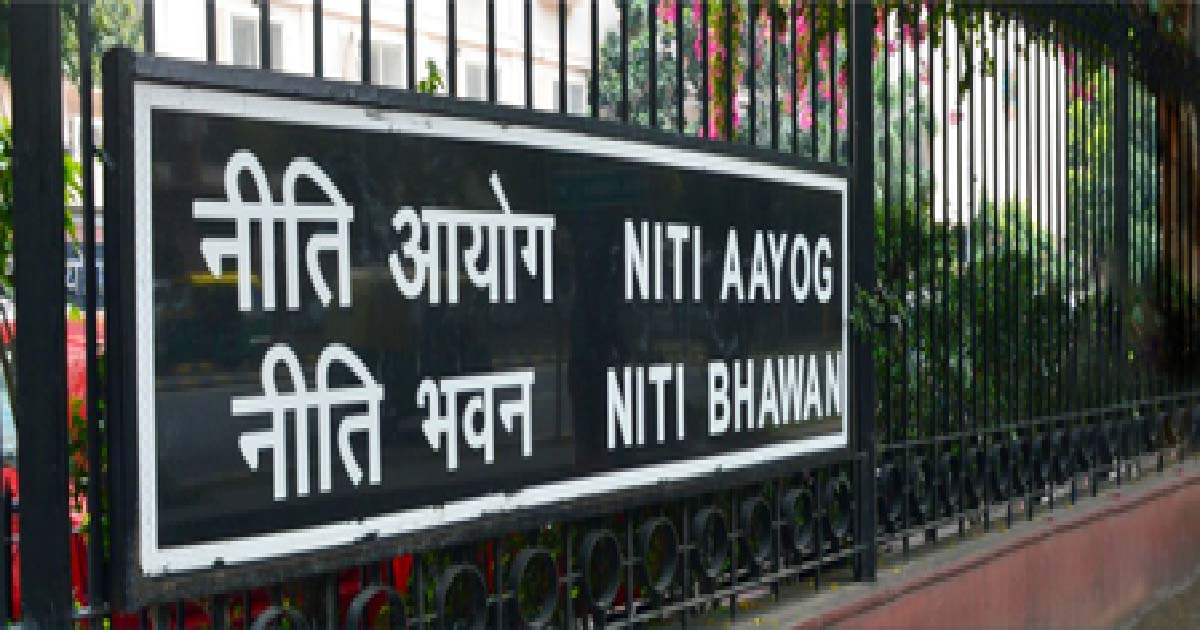
New Delhi, Oct 28: The services-led growth in India’s economy is becoming more regionally balanced as states with lower initial shares in services are catching up with more advanced ones, according to a NITI Aayog report released on Tuesday.
“There is clear evidence that structurally lagging States are beginning to catch up with advanced ones. This emerging pattern of convergence suggests that India’s services-led transformation is gradually becoming more broad-based and spatially inclusive,” the report states.
The services sector has become the cornerstone of India’s economic growth, contributing nearly 55 per cent of national GVA (Gross Value Added) in 2024-25.
To guide policy, the report introduces a quadrant-based framework that classifies 15 major service sub-sectors into four categories-Engines of Growth, Emerging Stars, Mature Giants, and Struggling Segments-to support differentiated strategies across States.
The report recommends prioritising digital infrastructure, logistics, innovation, finance, and skilling to accelerate diversification and competitiveness at the sectoral level.
It also recommends that at the state level there is a need for developing tailored service strategies based on local strengths, improving institutional capacity, integrating services with industrial ecosystems, and scaling up urban and regional service clusters.
Together, these findings offer a forward-looking policy road map for positioning the services sector as a key growth engine across India, reinforcing its central role in the Viksit Bharat @2047 vision.
A companion report titled India’s Services Sector: Insights from Employment Trends and State-Level Dynamics, focusses on employment within the services sector, drawing on data from the NSS (2011-12) and PLFS (2017-18 to 2023-24).
It offers a long-run and multi-dimensional view of India’s services workforce across sub-sectors, gender, regions, education, and occupations. The report goes beyond aggregate trends to reveal the sector’s dual character: modern, high-productivity segments that are globally competitive yet limited in employment intensity, and traditional segments that absorb large numbers of workers but remain predominantly informal and low-paying.
By linking historical and contemporary data, it situates these patterns within a broader framework of structural transformation, offering an integrated understanding of the opportunities and divides that shape India’s services-led employment transition.
Findings show that while services remain the mainstay of India’s employment growth and post-pandemic recovery, challenges persist. Employment generation is uneven across sub-sectors, informality remains widespread, and job quality continues to lag behind output growth. Gender gaps, rural-urban divides, and regional disparities underline the need for an employment strategy that integrates formalisation, inclusion, and productivity enhancement at its core.
To bridge these gaps, the report outlines a four-part policy road map focussing on formalisation and social protection for gig, self-employed, and MSME workers; targeted skilling and digital access to expand opportunities for women and rural youth; investment in emerging and green economy skills; and balanced regional development through service hubs in Tier-2 and Tier-3 cities.
By positioning the services sector as a purposeful driver of productive, high-quality, and inclusive jobs, the report underscores its centrality to India’s employment transition and its pivotal role in realising the vision of ‘Viksit Bharat @2047’.
The reports emphasise the need to deepen digital infrastructure, expand skilled human capital, foster innovation ecosystems, and integrate services across value chains, positioning India as a trusted global leader in digital, professional, and knowledge-based services.
National News
Maharashtra Politics: Eknath Shinde Hits Back At Uddhav Thackeray Over ‘Anaconda’ Remark, Says He Swallowed Mumbai’s ‘Tijori’
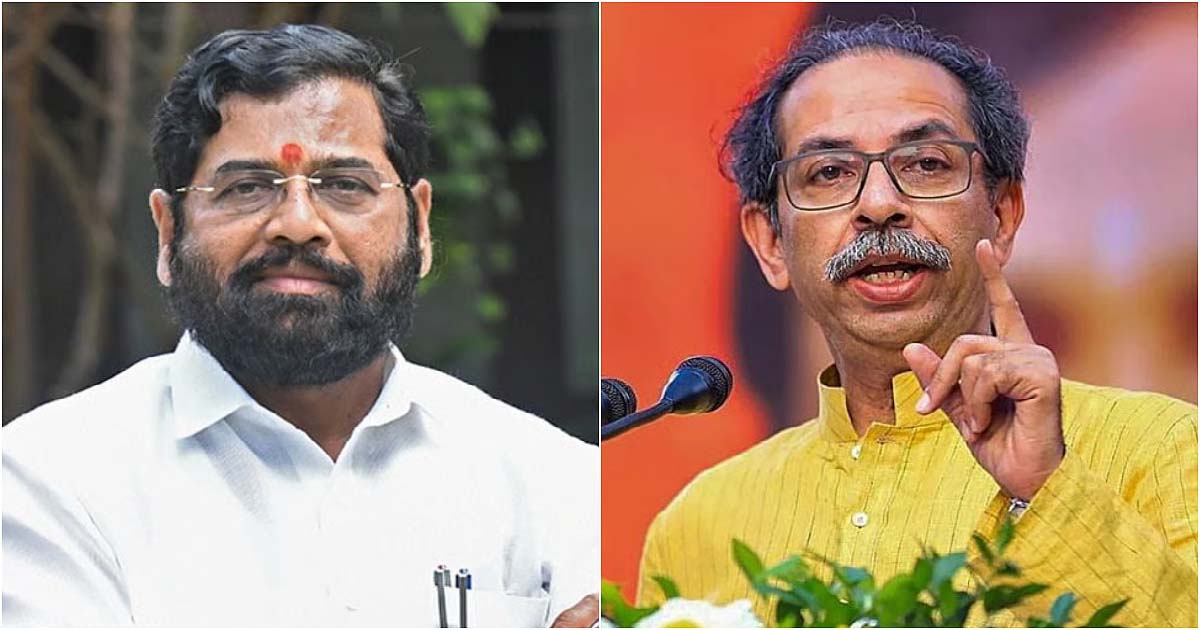
Mumbai: A political war of words erupted in Maharashtra after Shiv Sena (UBT) chief Uddhav Thackeray referred to Union Home Minister Amit Shah as an “anaconda” during his party’s Nirdhar rally at Worli Dome in Mumbai. Thackeray accused the BJP of trying to “swallow Mumbai” and claimed that two businessmen had their eyes on the city. His remarks drew sharp criticism from the ruling Mahayuti alliance, with Deputy Chief Minister Eknath Shinde issuing a strong rebuttal.
Speaking to the media on Saturday, Shinde said, “If you say anaconda, then he is an anaconda himself. For the last 25 years, they have been sitting on the Mumbai Municipal Corporation’s treasury with a big scythe. This anaconda has a different characteristic; it does not fill its stomach.
It swallowed Mumbai’s treasury, it swallowed Mumbai, it swallowed the khichdi of Mumbai patients. It swallowed some plots of land in Mumbai. It swallowed the mud in Mithi, it swallowed the asphalt on the road, but its stomach is still not full.”
Quoting from his press interaction, Shinde further said, “Anaconda himself was sitting on the vault of Mumbai. He swallowed the vault of Mumbai, swallowed Mumbai, swallowed the patient’s khichdi, swallowed money in the dead body bag, swallowed money in the dammer. Here, the garbage of the Mithi river has also been swallowed.”
The Deputy Chief Minister added that the people of Mumbai are aware of who truly developed the city. “When I became the Chief Minister, concrete roads began to be built, beautification began, escapism began, and the metro work restarted. People know who is developing and who is swallowing Mumbai,” he said.
Shinde also dismissed Thackeray’s claim that Mumbai was being separated from Maharashtra, calling it an “old cassette” played before every election. He said voters would not fall for the same allegations again.
-

 Crime3 years ago
Crime3 years agoClass 10 student jumps to death in Jaipur
-

 Maharashtra1 year ago
Maharashtra1 year agoMumbai Local Train Update: Central Railway’s New Timetable Comes Into Effect; Check Full List Of Revised Timings & Stations
-

 Maharashtra1 year ago
Maharashtra1 year agoMumbai To Go Toll-Free Tonight! Maharashtra Govt Announces Complete Toll Waiver For Light Motor Vehicles At All 5 Entry Points Of City
-

 Maharashtra1 year ago
Maharashtra1 year agoFalse photo of Imtiaz Jaleel’s rally, exposing the fooling conspiracy
-

 National News1 year ago
National News1 year agoMinistry of Railways rolls out Special Drive 4.0 with focus on digitisation, cleanliness, inclusiveness and grievance redressal
-

 Maharashtra12 months ago
Maharashtra12 months agoMaharashtra Elections 2024: Mumbai Metro & BEST Services Extended Till Midnight On Voting Day
-

 National News1 year ago
National News1 year agoJ&K: 4 Jawans Killed, 28 Injured After Bus Carrying BSF Personnel For Poll Duty Falls Into Gorge In Budgam; Terrifying Visuals Surface
-

 Crime1 year ago
Crime1 year agoBaba Siddique Murder: Mumbai Police Unable To Get Lawrence Bishnoi Custody Due To Home Ministry Order, Says Report



